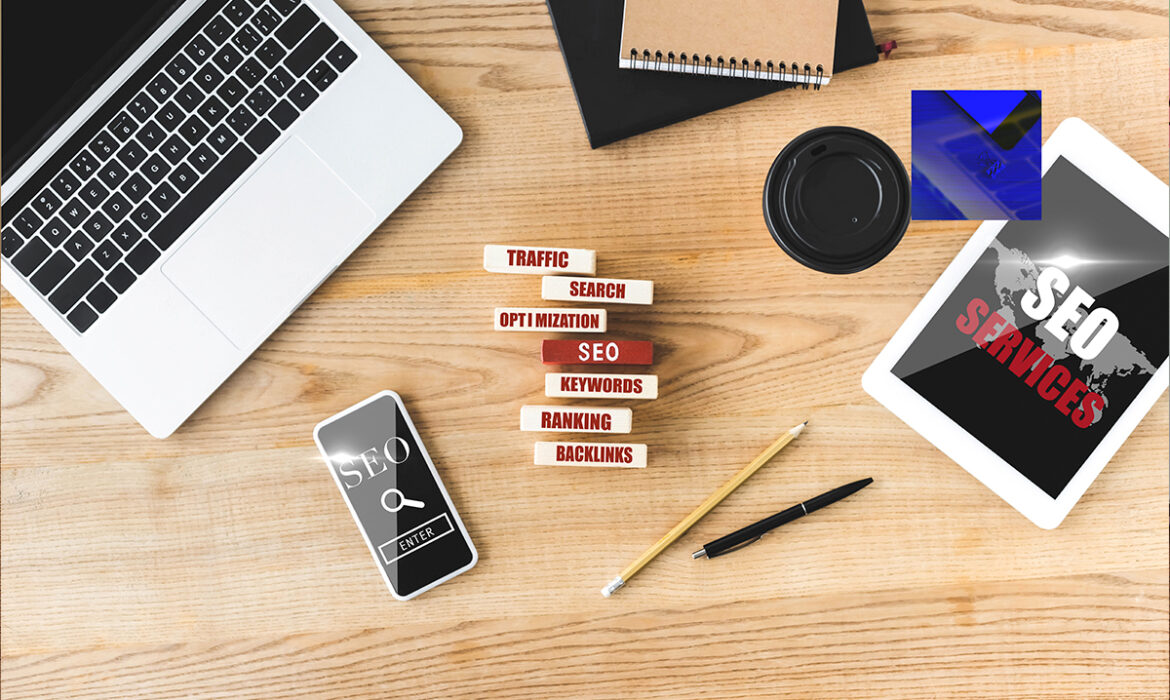Cómo Incorporar la Realidad Aumentada en tu Estrategia de Marketing
Cómo Incorporar la Realidad Aumentada en tu Estrategia de Marketing
La realidad aumentada (RA) ha revolucionado la manera en que las marcas interactúan con sus audiencias, ofreciendo experiencias inmersivas que capturan la atención y mejoran el compromiso del cliente. Incorporar la realidad aumentada en tu estrategia de marketing no solo te permite destacar entre la competencia, sino que también crea oportunidades para personalizar la experiencia del usuario, facilitando decisiones de compra más informadas y aumentando la lealtad del cliente.
Para empezar, es importante entender qué es la realidad aumentada. A diferencia de la realidad virtual, que sumerge completamente a los usuarios en un entorno digital, la realidad aumentada superpone elementos digitales interactivos sobre el mundo real a través de dispositivos como smartphones o gafas de RA. Esto permite que los consumidores experimenten productos o servicios de manera innovadora, sin necesidad de estar físicamente presentes.
Uno de los primeros pasos para incorporar la realidad aumentada en tu estrategia de marketing es identificar cómo esta tecnología puede aportar valor a tu audiencia. Por ejemplo, si tienes una tienda de moda, puedes desarrollar una aplicación de RA que permita a los usuarios “probarse” virtualmente la ropa o accesorios desde la comodidad de sus hogares. Esto no solo facilita el proceso de compra, sino que también reduce las tasas de devolución, ya que los clientes pueden ver cómo les quedará un producto antes de comprarlo.
Otro uso efectivo de la realidad aumentada es en el diseño de campañas interactivas. Las marcas pueden crear experiencias de RA que involucren a los usuarios de manera lúdica, como juegos, búsquedas del tesoro o filtros de redes sociales personalizados que integren los productos o mensajes de la marca. Estas campañas no solo generan ruido en las plataformas digitales, sino que también fomentan la participación activa y el compartir, lo que amplía el alcance de la marca de manera orgánica.
El marketing basado en ubicaciones es otra área donde la realidad aumentada puede ser extremadamente efectiva. Imagina una campaña en la que los usuarios, al estar cerca de tu tienda física, reciban notificaciones que les inviten a usar su smartphone para ver una promoción especial o una presentación de producto en RA justo en la fachada de tu tienda. Este tipo de interacción no solo atrae a clientes potenciales, sino que también convierte el marketing digital en una experiencia física tangible.
La realidad aumentada puede mejorar significativamente las presentaciones de productos. Las empresas de muebles, por ejemplo, pueden usar RA para permitir que los clientes visualicen cómo se verán los muebles en sus propios hogares. Aplicaciones como estas, que proporcionan un sentido realista de escala, color y ubicación, ayudan a los consumidores a tomar decisiones más informadas y a sentirse más seguros de sus compras.
Integrar la realidad aumentada en los eventos y lanzamientos de productos es otra estrategia poderosa. Las demostraciones en vivo que utilizan RA pueden hacer que los eventos sean más memorables y que los productos se destaquen, especialmente cuando los participantes pueden interactuar directamente con la tecnología. Esto no solo mejora la experiencia del evento, sino que también proporciona contenido valioso que puede ser compartido en redes sociales, ampliando así el impacto del lanzamiento.
Es fundamental medir el impacto de la realidad aumentada en tu estrategia de marketing. A través de herramientas de análisis, puedes rastrear cómo los usuarios interactúan con tus experiencias de RA, cuánto tiempo pasan usándolas y cómo estas interacciones influyen en sus decisiones de compra. Estos datos te permitirán ajustar y optimizar tu estrategia para maximizar su efectividad.
La implementación exitosa de la realidad aumentada requiere una colaboración estrecha con desarrolladores y expertos en tecnología. Asegúrate de que la experiencia de RA esté bien integrada en tu plataforma digital y que sea accesible para tu audiencia objetivo. La experiencia del usuario debe ser fluida, intuitiva y compatible con diferentes dispositivos para garantizar un alto nivel de participación y satisfacción.
Strategies for Marketing Niche Products
Strategies for Marketing Niche Products
Marketing niche products requires a specialized approach that allows you to reach a specific audience with particular needs and desires. Unlike mass products, niche products target a narrow segment of the market, which requires designing highly targeted and customized strategies to attract and retain this select audience.
One of the first key strategies in niche product marketing is accurate market segmentation. It is essential to identify who your ideal customer is and what characteristics define them. This includes demographics, interests, purchasing behaviors, and specific needs. By deeply understanding your audience, you can create marketing messages that resonate directly with their desires and expectations, increasing the likelihood of capturing their attention and loyalty.
High-quality content is another pillar in the marketing strategy for niche products. Since you are targeting a specific group, it is essential that the content you create is relevant, informative, and offers real value to your audience. Blogs, detailed guides, video tutorials, and case studies are great ways to demonstrate how your product can solve specific problems or meet particular needs. This approach not only positions you as an expert in your niche, but also helps build trust with your potential customers.
Social media plays a crucial role in marketing niche products. Platforms like Instagram, Facebook, and LinkedIn offer advanced targeting tools that allow you to target very specific groups of people based on their interests, behaviors, and location. By using targeted ads and relevant content, you can effectively reach your audience without wasting resources on segments that have no interest in your product. Additionally, online communities and specialized social media groups can be a great channel to interact with your target audience and get direct feedback.
Influencer marketing is also especially effective for niche products. Collaborating with micro-influencers, who are figures with a loyal and engaged following within your niche, can be a powerful way to reach your audience authentically. These influencers are already trusted by your target audience, and their recommendation can have a significant impact on purchasing decisions.
Personalization is another critical component in niche product marketing . Offering personalized shopping experiences, product recommendations based on user behavior, and communications tailored to individual preferences can significantly improve customer satisfaction and foster long-term loyalty. Not only does this increase conversion rates, but it also differentiates your brand from the competition.
Social proof and testimonials play a vital role in validating niche products . Because these products are often lesser-known and can be considered a riskier investment, consumers often seek out other users’ approval and experiences before making a purchase. Including testimonials, reviews, and success stories in your marketing strategy can help mitigate these concerns and provide the confidence needed for new customers to try your product.
Search engine optimization (SEO) is essential to ensure that your niche product is found by those searching for exactly what you offer. Since niche keywords typically have less competition, you have an excellent chance of ranking well in search results, which can significantly increase organic traffic to your website. Make sure that your content is optimized with keywords specific to your niche and that your site is well-structured to facilitate indexing by search engines.
How to Use Visual Storytelling in Your Marketing Campaigns
How to Use Visual Storytelling in Your Marketing Campaigns
Visual storytelling has become a powerful tool in modern marketing, allowing brands to emotionally connect with their audiences through images, videos, and other graphic elements. The ability to tell a story visually not only captures consumers’ attention, but also communicates complex messages in an effective, memorable, and engaging way.
Using visual storytelling in marketing campaigns starts with understanding the story you want to tell. Every brand has a unique story, and it’s essential to identify which aspects of this story will resonate most with your audience. This can include the company’s mission, core values, or even the personal stories behind products or services. By clearly defining the narrative, you can create a solid foundation for developing visuals to support it.
One of the most important aspects of visual storytelling is consistency in brand representation. Colors, fonts, image and video styles should be consistent across all platforms to strengthen the brand identity and make the story easily recognizable. This consistency not only reinforces the narrative, but also creates a more cohesive and professional user experience.
Furthermore, visual storytelling allows brands to convey emotions immediately and powerfully. Images and videos have the ability to evoke feelings that words alone cannot achieve. For example, a campaign that seeks to highlight the warmth and relatability of a brand can use warm tones and familiar scenes that convey that emotion. Careful choice of visual elements can therefore directly influence how consumers perceive and connect with the brand.
Social media platforms are an ideal space to implement visual storytelling strategies . These platforms are designed for visual content, allowing brands to share stories through images, videos, infographics, and other visual formats. Instagram, for example, is all about visual aesthetics, making it a perfect channel for storytelling through images and short videos. Facebook, on the other hand, allows you to combine text with images and videos, providing a more flexible format for visual storytelling .
Video, in particular, is a powerful tool in visual storytelling . Videos allow for dynamic, immersive storytelling, combining moving images, sound, and text. Brands can use videos to show how their products are made, tell the story of the founders, or even share testimonials from satisfied customers. These videos not only inform, but also create an emotional connection with the audience, which can lead to increased brand loyalty and engagement.
The use of visual storytelling should also be aligned with the company’s marketing goals. If the goal is to increase brand awareness, the visual elements should be impactful and memorable. If the goal is to educate the audience about a product or service, the visual narrative should be clear and easy to follow. The key is to make sure that each visual element supports and enhances the overall message of the campaign.
It’s important to measure the impact of visual storytelling on your marketing campaigns. Metrics like engagement, reach, and conversions can provide valuable insights into how visual elements are resonating with your audience. This feedback can be used to adjust and improve visual strategies in future campaigns.
The Role of Omnichannel Marketing in Customer Experience
The Role of Omnichannel Marketing in Customer Experience
Omnichannel marketing has become a fundamental strategy to improve customer experience in a world where interaction with brands takes place across multiple platforms. Unlike the multichannel approach, which simply uses different communication channels, omnichannel marketing seeks to integrate these channels in a coherent way to offer a fluid and personalized experience to each customer.
One of the key benefits of omnichannel marketing is that it allows brands to maintain constant and consistent communication with their customers, regardless of the channel they use. For example, a customer can initiate a purchase in an online store, continue the transaction on a mobile app, and finish it in a physical store, all without interruptions or inconsistencies in the experience. This ability to offer a unified experience is key to maintaining customer satisfaction and fostering loyalty.
Omnichannel marketing allows brands to collect and analyze consumer data in real-time, making it easier to personalize the customer experience. By better understanding customer behaviors and preferences, brands can offer product recommendations, promotions, and content that are tailored to each consumer’s individual interests. This personalization not only improves customer satisfaction, but also increases the likelihood of conversion and loyalty.
Integrating channels in omnichannel marketing also enables brands to offer more efficient customer service. For example, if a customer has a query about a product they viewed online, they can contact customer service via social media, receive an immediate response, and then continue the conversation on another channel, such as email or live chat. Consistent communication and the availability of multiple channels facilitate quick and satisfactory resolution of issues, significantly improving the customer experience.
Another important aspect of omnichannel marketing is its ability to enhance the physical shopping experience. Despite the rise of e-commerce, physical stores remain a crucial touchpoint for many brands. Through omnichannel marketing, brands can offer in-store experiences that are connected to customer online behavior. For example, omnichannel loyalty programs allow customers to accumulate and redeem points both online and in physical stores, creating a more complete and engaging brand experience.
Omnichannel marketing also has a positive impact on customer retention. By offering a consistent and personalized customer experience across all touchpoints, brands can reduce friction in the purchasing process and increase overall customer satisfaction. Customers who experience seamless service tailored to their needs are more likely to return and become loyal customers.
Omnichannel marketing enables brands to adapt to changing consumer preferences. In an environment where customer expectations are rapidly evolving, the ability to deliver a seamless, personalized experience across multiple channels is crucial to staying competitive. Brands that adopt an omnichannel approach can respond more effectively to emerging trends and maintain a competitive advantage in the marketplace.
Omnichannel marketing plays a crucial role in improving customer experience by delivering consistent, personalized, and seamless communication across all channels. By integrating and optimizing every customer touchpoint, brands can create a more engaging experience, improve customer satisfaction, and ultimately increase long-term customer loyalty and value.
How to Create Unique and Memorable Brand Experiences
How to Create Unique and Memorable Brand Experiences
In the world of marketing, creating unique and memorable brand experiences has become one of the most powerful strategies to differentiate yourself in a saturated market. Brand experiences not only create a lasting impact on consumers, but they also strengthen the emotional connection between them and the brand, which can translate into greater loyalty and, ultimately, increased sales.
For starters, it is essential that brand experiences are consistent with the brand’s identity and values. This means that every point of contact with the consumer must reflect the essence of the brand, from product design to customer service. Brands that are consistent in their message and presentation are more easily recognized and remembered by consumers. This consistency not only reinforces the brand’s identity, but also helps build trust and credibility in the minds of consumers.
Another crucial aspect of creating memorable brand experiences is personalization. Consumers increasingly value interactions that are relevant and tailored to their interests and needs. Personalizing the customer experience can range from product recommendations based on previous purchases to communications that reflect the consumer’s interests. When brands succeed in delivering personalized experiences, consumers feel more connected and valued, which strengthens their relationship with the brand.
It is important for brand experiences to be multi-sensory. Engaging multiple senses in interacting with the brand can significantly increase the memorability of the experience. For example, the use of music, scents, and textures in physical stores or on product packaging can leave a lasting impression on consumers. Brands that manage to stimulate multiple senses at once are often more easily remembered and generate a stronger emotional response.
Authenticity is another driving factor in creating unique brand experiences . Today’s consumers, especially younger generations, value transparency and authenticity in the brands they interact with. Creating experiences that are genuine and reflect the brand’s true personality can differentiate a brand in a market full of similar offerings. Authentic brands are perceived as more trustworthy and are more likely to generate long-term loyalty.
Storytelling also plays a key role in creating memorable brand experiences . Telling a story that resonates with the audience, is relevant and emotive, can transform the perception of a brand and make consumers feel a part of that story. Storytelling not only helps humanize the brand, but also makes it easier for consumers to identify with its values and mission.
Involving consumers in the creation of brand experiences can be extremely effective. Brands that allow their customers to actively participate, whether through product co-creation, interactive events, or collaborative marketing campaigns, often create a sense of belonging and community. This active participation not only strengthens the emotional connection, but also turns consumers into brand ambassadors.
It is essential to continually measure and optimize brand experiences. Understanding how consumers perceive and react to the experiences that the brand offers allows for adjustments and improvements to be made that ensure that these experiences remain relevant and effective. Brands that invest in the continuous improvement of their brand experiences are better positioned to maintain a strong connection with their consumers.
Strategies to Improve Brand Loyalty
Strategies to Improve Brand Loyalty
Brand loyalty is a crucial factor for the long-term success of any business. When customers are loyal to a brand, they not only continue to purchase its products or services, but they also become brand advocates, recommending it to friends and family. Developing effective strategies to improve brand loyalty is critical to building a strong and sustainable customer base.
One of the most effective strategies for building brand loyalty is to offer a high-quality product or service that consistently meets customer expectations. When customers feel they can rely on the quality of what you offer, they are more likely to return. However, quality alone is not enough. Companies must go a step further by providing excellent customer service. Friendly, fast and efficient service can make a big difference in the way customers perceive a brand, strengthening their loyalty.
Another key strategy is to create an attractive rewards program that incentivizes customers to continue choosing the brand. These programs can include discounts, cumulative points, exclusive access to products or services, and special offers. A well-designed rewards program not only increases customer retention rates, but also provides added value that strengthens the relationship between the brand and its customers.
Personalization is also a powerful tool in building brand loyalty. Customers appreciate when a brand takes the time to understand their preferences and needs, and uses that information to offer them personalized experiences. This can include product recommendations based on previous purchases, personalized communications, or exclusive promotions that reflect the customer’s interests. Personalization makes customers feel valued and understood, which increases their loyalty to the brand.
Consistency in brand identity and messaging also plays a major role in brand loyalty. Customers are more likely to be loyal to a brand that is consistent in its communication, values, and promises. Maintaining a consistent brand identity across all channels and touchpoints ensures that customers recognize and feel connected to the brand, regardless of where they interact with it.
Brands should also consider the importance of social responsibility in their brand loyalty strategies. Today’s consumers are increasingly concerned about the ethical values and social impact of the companies they do business with. Brands that commit to social causes, sustainability and ethical business practices often win the loyalty of customers who share those values.
Fostering a community around your brand can be a very effective strategy to improve brand loyalty . Creating spaces where customers can interact with each other, share their experiences and connect with your brand on a deeper level, such as through social media, forums or special events, reinforces the sense of belonging and connection with your brand.
Improving brand loyalty requires a multifaceted approach that combines product quality, exceptional service, rewards programs, personalization, brand identity consistency, social responsibility, and community building. By implementing these strategies effectively, brands can not only retain their customers, but also turn them into loyal advocates who will drive their long-term success.
The Importance of Transparent Marketing in Brand Building
The Importance of Transparent Marketing in Brand Building
In today’s competitive environment, consumer trust is one of the most valuable assets a business can have. This is where transparent marketing plays a crucial role in building a strong, trustworthy brand. Transparency isn’t just a trend; it’s an expectation of modern consumers who value honesty and authenticity in the companies they choose to interact with.
Transparent marketing refers to the practice of being honest and clear in all marketing communications. This means not only being upfront about the products or services being offered, but also about business practices, company values, and how customer relationships are managed. When a company takes a transparent approach, it establishes a foundation of trust that can result in increased customer loyalty, which in the long run translates into increased brand retention and advocacy.
One of the biggest benefits of transparent marketing is that it humanizes the company. Consumers tend to relate better to brands that show their human side, that admit mistakes when they happen, and that are willing to course-correct if necessary. This level of openness not only strengthens the relationship with existing customers, but also attracts new consumers who are looking for authenticity in a market saturated with options.
Transparency in marketing also involves clarity in communicating pricing, return policies, and any other information that may affect a customer’s purchasing decision. Instead of using misleading or confusing tactics, a transparent approach ensures that consumers understand exactly what they are getting and what they can expect. This clarity not only prevents misunderstandings, but also reduces complaints and increases customer satisfaction.
Another crucial aspect of transparent marketing is reputation management. In the digital age, where information spreads quickly, brands that are open and honest are more likely to survive and thrive in the face of crises. When companies are transparent in their communications, especially during difficult situations, they can mitigate damage and maintain the trust of their customers. In fact, brands that handle crises with transparency often come out stronger, as consumers value integrity and honesty.
Transparent marketing also contributes to market differentiation. In highly competitive industries, where products or services may be similar, transparency can be the deciding factor that tips the scales in favor of a brand. Consumers are not only looking for the best product, but also the best overall experience with the brand. A marketing strategy that prioritizes transparency can stand out in a sea of traditional marketing messages and create a deeper connection with the audience.
Transparency doesn’t happen overnight. It requires a genuine commitment from across the organization, from senior management to every employee. Transparent marketing should reflect the company’s culture and be consistent across all customer interactions. Companies must be willing to be open not only about their successes, but also about their challenges and how they are addressing them.
Transparent marketing is essential to building a strong, lasting brand. By being honest, clear, and authentic in all marketing communications, companies can build a solid foundation of trust with their customers. This trust not only strengthens customer loyalty, but also enhances the brand’s reputation and positions it for sustained success in the marketplace.
How to Create a Content Strategy for Social Media
How to Create a Content Strategy for Social Media
In today’s digital world, having a well-defined social media content strategy is crucial for any business looking to build a strong online presence. Social media is not only a platform for sharing information, but it is also a powerful tool for connecting with your audience, building your brand, and generating measurable results. Without a proper strategy, it’s easy to get lost in the noise of the competition and not take full advantage of the potential of these platforms.
The first step to creating an effective social media content strategy is to clearly define the goals you want to achieve. These may include increasing brand awareness, generating leads, improving customer service, or fostering loyalty from existing customers. By having clear goals, you can target your content to serve these specific purposes and measure the success of your efforts.
Once you have your goals in mind, it’s crucial to know your audience. This means researching who your followers are, what interests them, and how they prefer to consume content. A successful social media content strategy relies on creating content that resonates with your audience and aligns with their needs and expectations. The better you understand your audience, the more effective your content will be at capturing their attention and generating valuable interactions.
Visual content is one of the most important elements in any social media content strategy. Images, videos, and infographics tend to generate more engagement than plain text. Therefore, it is essential to invest time in creating engaging and relevant visual content. This content should be aligned with your brand identity and effectively convey the message you want to communicate. Additionally, using tools that facilitate the creation of visual content, such as Canva or Adobe Spark, can help you maintain a consistent and professional aesthetic.
Consistency is key in a social media content strategy. This doesn’t just refer to how often you post, but also to maintaining a consistent tone of voice and visual style. Your followers should be able to recognize your content immediately, which reinforces your brand identity. Setting up a posting schedule is a great way to ensure you’re posting regularly and at the most opportune times for your audience.
Using the right hashtags and keywords is also essential to increase the visibility of your content. A good social media content strategy includes researching and using popular and relevant hashtags that can help your content get discovered by a wider audience. However, it is important not to overuse them; use only those that truly add value and are aligned with your content and your audience.
Another vital aspect is interaction with your audience. A social media content strategy should not be limited to posting content; it should also include engagement with your followers. Responding to comments, sharing user-generated content, and participating in relevant conversations are all effective ways to build a community around your brand. This type of interaction not only increases engagement, but also helps humanize your brand and create stronger relationships with your followers.
Measuring and analyzing results is a crucial component of any social media content strategy . Using analytics tools like Google Analytics, Hootsuite, or the social platforms’ own statistics, will allow you to understand what type of content works best and how you can adjust your strategy to get better results. Continuous analysis will help you identify trends, optimize your content, and ensure that you are reaching your goals.
Creating an effective social media content strategy requires planning, audience awareness, creativity, and a results-oriented approach. By following these principles, you can maximize the impact of your social media efforts, build a strong brand, and meaningfully connect with your audience.
How to Integrate Digital and Traditional Marketing into Your Strategy
How to Integrate Digital and Traditional Marketing into Your Strategy
Integrating digital and traditional marketing into a coherent strategy is key to maximizing the reach and effectiveness of a company’s campaigns. Even though digital marketing has gained ground in recent years, traditional marketing remains relevant and effective, especially for certain audiences and in specific contexts. Combining both approaches allows companies to leverage the best of both worlds, creating a richer, omnichannel brand experience that reaches consumers wherever they are.
Digital marketing is characterized by its ability to accurately target and measure in real time, allowing businesses to adjust their campaigns on the fly to improve results. Tactics such as social media advertising, content marketing, SEO, and email marketing allow businesses to reach specific audiences with personalized and relevant messages. Additionally, digital marketing offers the ability to interact directly with consumers, creating closer and more personalized relationships. This approach is particularly effective for generating leads, increasing brand awareness online, and fostering loyalty through ongoing interactions.
On the other hand, traditional marketing encompasses more established tactics, such as television, radio, print, and billboard advertising. While these forms of marketing do not offer the same level of segmentation and analysis as digital, they are extremely effective in reaching mass audiences and creating a brand presence in the offline world. The familiarity and trust that many people still associate with traditional media can be a great asset, especially in campaigns that seek to build a strong and stable brand image over time. Traditional tactics are ideal for creating an immediate and strong impact on the consumer, and are often used in product launch campaigns or rebranding efforts.
The key to integrating digital and traditional marketing is to ensure that both approaches work together to reinforce the same brand message. An omnichannel strategy that coordinates campaigns across digital and traditional media can maximize impact by maintaining consistency in communication. For example, a product launch campaign could use TV ads to generate mass awareness, while complementing this with social media campaigns that direct interested consumers to a specific landing page where they can learn more or make a purchase. This combination ensures that the messages reinforce each other, increasing the likelihood that consumers will remember the brand and take action.
Digital marketing can enhance traditional campaigns by providing valuable data on consumer behavior that can be used to optimize offline strategies. Digital campaigns can provide detailed information on which audience segments respond best to certain messages, allowing the segmentation of traditional campaigns to be adjusted to improve their effectiveness. For example, if a digital campaign reveals that a certain demographic has a high interest in a product, a direct mail marketing campaign can be specifically targeted to that group to increase conversions.
Another important aspect of integration is the use of tracking tools to measure the effectiveness of both strategies. Custom URLs, QR codes, and unique phone numbers are all ways to link traditional campaigns with digital efforts, allowing businesses to track how consumers interact with different touchpoints. Not only does this help measure the ROI of traditional campaigns, but it also provides additional data that can be used to improve future campaigns.
Businesses should consider how online and offline experiences complement each other in the customer journey. For example, a TV or radio advertising campaign can direct consumers to a specific web page, where they can learn more or make a purchase. At the same time, online content can prepare consumers for future offline interactions, such as visits to a physical store. This integration ensures a seamless and consistent brand experience, regardless of how consumers choose to interact with the business.
Integrating digital and traditional marketing allows companies to leverage the strengths of both approaches, creating more effective campaigns and a more complete brand experience. The key is consistency of message, the use of data to optimize strategies, and the ability to measure and adjust campaigns over time.
How to Use Conversational Marketing to Boost Sales
How to Use Conversational Marketing to Boost Sales
Conversational marketing has emerged as one of the most effective strategies to connect with customers and drive sales in today’s digital environment. Through personalized, real-time interactions, brands can build closer relationships with their customers, offer superior customer service, and increase sales conversion. In a world where immediacy and personalization are increasingly valued, conversational marketing has become a crucial element for companies looking to stand out in a competitive market.
Conversational marketing relies on the use of tools such as chatbots, virtual assistants, and messaging apps to communicate with customers in a direct and personalized way. These technologies allow companies to interact with consumers in real time, answering their questions, offering product recommendations, and guiding them through the purchasing process. This not only improves the customer experience, but also reduces friction in the purchasing process, which can lead to a significant increase in sales.
One of the biggest benefits of conversational marketing is its ability to personalize customer interaction. Unlike traditional forms of marketing, which are often one-way, conversational marketing allows for a two-way dialogue. This means brands can tailor their messages based on customer responses and preferences, offering personalized recommendations that increase relevance and the likelihood of conversion. For example, a chatbot can use information from previous purchases to suggest complementary products, which can increase the average purchase value.
Additionally, conversational marketing makes it easy to collect valuable data about customers. Through interactions, brands can gain insights into consumer needs, preferences, and behaviors. This data can be used to optimize future marketing campaigns, improve products and services, and deliver even more personalized experiences. By better understanding their customers, companies can design strategies that not only increase sales but also strengthen customer loyalty in the long run.
Another important aspect of conversational marketing is its ability to improve customer service. Today’s consumers expect quick responses and immediate solutions to their problems. Through chatbots and virtual assistants, brands can offer 24/7 support, resolving queries and issues in real-time. This not only improves customer satisfaction but also frees up human resources to focus on more complex and strategic tasks.
Conversational marketing also plays a crucial role in creating more seamless shopping experiences. By integrating chatbots into e-commerce platforms, businesses can guide customers through the entire purchasing process, from product search to checkout. This can reduce shopping cart abandonment rates as customers receive the assistance they need at every stage of the process. Additionally, by answering questions in real-time, brands can overcome purchasing objections and close sales faster.
Successful implementation of conversational marketing requires a well-defined strategy. Businesses need to identify key touchpoints where conversational interaction can add the most value, whether in customer service, product sales, or lead generation. Additionally, it is important to choose the right tools that align with business goals and customer expectations. Integrating these channels with other marketing platforms, such as CRM and automation systems, is also essential to maximize the impact.
In short, conversational marketing has become an indispensable tool for brands that want to boost sales and improve customer experience. By enabling personalized and real-time interactions, this strategy not only facilitates sales conversion but also strengthens the relationship between the brand and the customer. As technology continues to advance, conversational marketing will continue to evolve, offering new opportunities to connect with consumers more effectively and efficiently.













